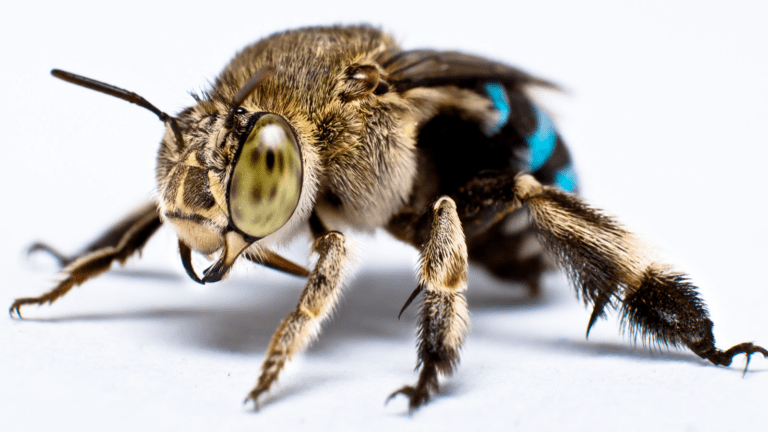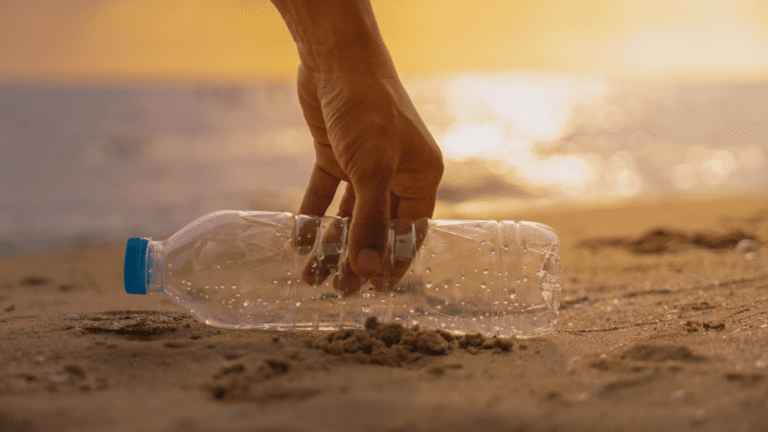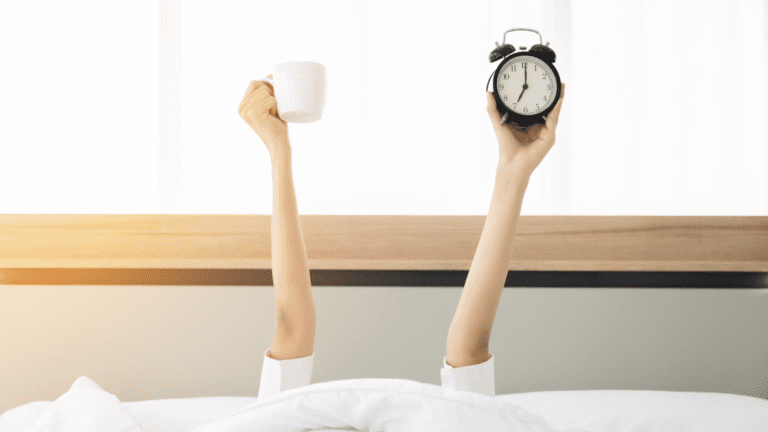What’s the buzz about native bees?

Life would be very dull without bees.
With all their busy buzzing pollinating efforts, bees are responsible for much of the colour and variety in the natural world.
Other insects like butterflies, birds, moths and beetles are important pollinators. Even some rodents are pollinators.
But with World Bee Day on May 20—the day to celebrate all things bee-related—let’s talk about bees, particularly our wonderful native bees.
Bees are essential for pollinating around 75% of the global food crops that make up our food supply. This includes fruits, vegetables, nuts, and seeds, which are all important sources of nutrients in our diet.
Without bees, the food we eat would be less diverse, less nutritious, and less abundant. Sounds terrible. Imagine life without foods like mangos, almonds, blueberries, macadamias, and avocados.
In addition to their role in food production, bees—especially native bees—play a critical role in maintaining the balance of ecosystems.
Many native plants, that provide food and habitat for a variety of wildlife, rely heavily on native bee pollination to enable reproduction. Without these bees much of our native flora would head toward extinction and lead to a massive decline in biodiversity.
Bees are also important indicators of environmental health. As bees are highly sensitive to changes in their environment, their decline can serve as a warning sign of larger environmental issues, such as pollution or habitat loss.
When we protect bees, we are protecting the whole environment.
As the global population continues to grow, the demand for food obviously increases. Research shows that native bee species, because of their methods of pollinating, are often more efficient and effective than introduced species are at pollinating many important crops. So, the protection of native bees must be a priority when considering food production.

However, Australian native bees are increasingly threatened by multiple factors: habitat loss, competition from introduced species like honeybees, climate change, and poor use of pesticides and herbicides.
By establishing a bee-friendly garden, with just a few of the following simple additions, we can create a safe haven for our native bees.
🐝 Food
Bees love flowers. Flowers can be a simple bee-attracting addition wherever you live.
Bees like a variety of colours and shapes of flowers, but particularly blue, yellow and white flowers.
Flowers with a high nectar and pollen content like sunflowers, lavender, marigolds, and poppies will do the job. Hybrid plants, bred for their ornamental value, are not so good as they have less nectar and pollen than their non-hybrid varieties.
If you have veggies and herbs, letting them go to flower works a treat for bees.
Planting a diverse array of flowers will attract a greater variety of bees to your garden, but be sure to plant flowers that bloom at different times of the year so that bees have a continuous food source.
Most importantly, since native bees are better adapted to native flowers, why not look at planting a range of flowering plants that are local to your area?
Native gardens provide multiple benefits: they are lower maintenance as they are better adapted to the local environment; they provide a source of food and shelter for other native fauna; and they can contribute to a wildlife corridor connecting plant and animal populations.
Here is one of many great sources for information on which flowers bees love most.
🐝 Water
Bees need water to stay hydrated, and to cool down when it’s hot. In hot weather, they may drink up to 10 times their body weight in water. A shallow water dish or saucer close to the ground, preferably under the shade of some vegetation, provides easy access to water. A few rocks in the water can help ensure the bees have somewhere to land. Be sure to keep the water clean and changed regularly.

🐝 Shelter
Most native bees are solitary, building small individual nests in undisturbed soil, hollow stems, dry twigs and fronds of plants, or holes in timber and stonework. Bees may use any of these occurring naturally in your garden. However, a bee hotel is purpose built to replicate these structures, giving native solitary bees a place to rest, nest and breed. There are commercial bee hotels available to buy in just about every store you go in these days. But making your own bee hotel can be as simple as drilling holes into a cut log or tying together a bundle of bamboo or dried fennel stems. There are many websites like this with tips on how to make your own bee hotel.
Let’s make this World Bee Day the day to commit to helping protect our native bees. Maybe set the day aside to create a bee-friendly garden; buy a few native bee-attracting plants, make a simple bee hotel, put out a shallow dish of water. Easy.
Sources:
Can you beelieve?! Our guide to native bees. https://blog.csiro.au/can-you-beelieve-our-guide-to-native-bees/
Flowers loved by Australian native bees. https://www.aussiebee.com.au/flowerslovedbybees.html
How to make and run a bee hotel. https://www.abc.net.au/everyday/how-to-make-a-bee-hotel/11492162
Native bees are powerful pollinators, and there’s a simple way to help them. https://www.abc.net.au/news/science/2019-01-29/merits-of-native-bees-can-they-save-us/10749696
Native bees best. https://www.utas.edu.au/about/news-and-stories/articles/2017/328-native-bees-best
Why choose native plants? https://www.stateflora.sa.gov.au/the-australian-garden/why-choose-native-plants
World Bee Day 20 May. https://www.fao.org/world-bee-day/en/







